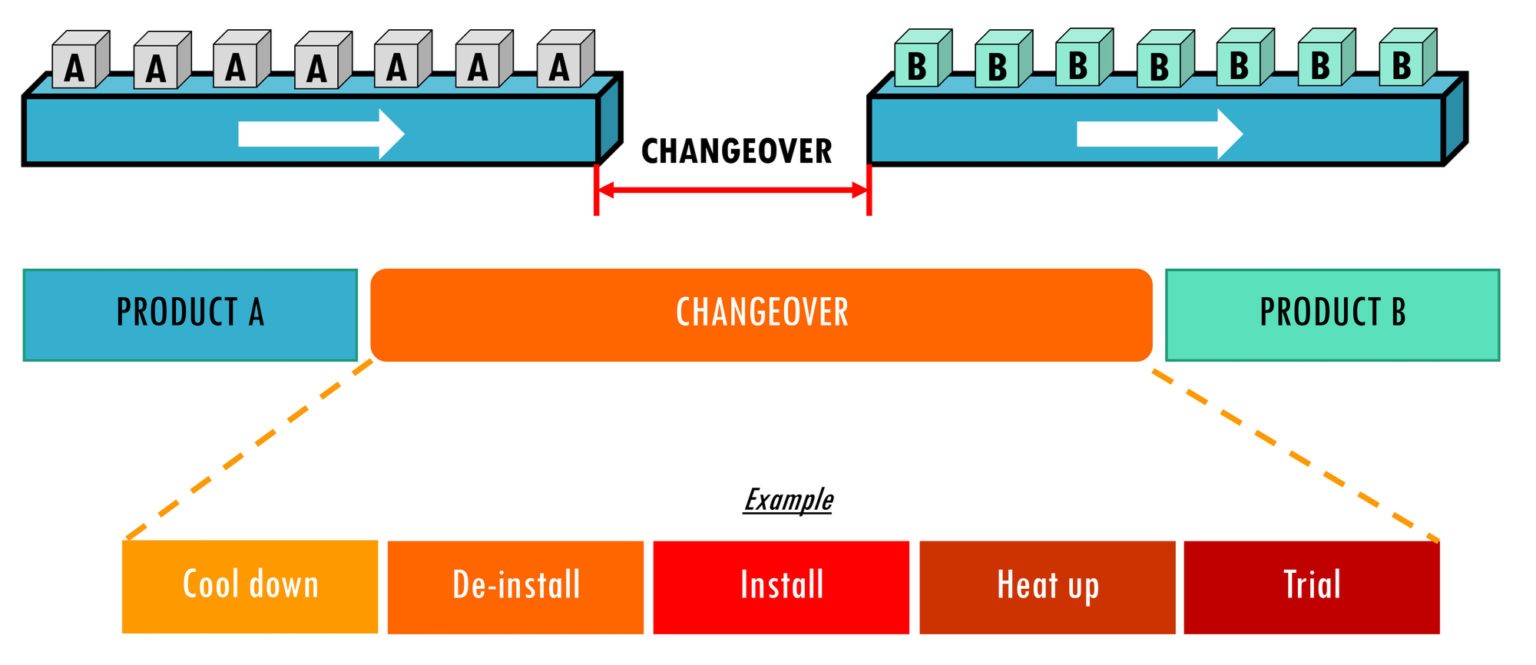The Philosophy of a Single Minute Exchange of Dies Quick Changeover

Changeovers are an integral part of any manufacturing operation. Most production lines do changeovers while the line is down, giving them time to perform the setup and complicated calibrations. At least, that’s the way things are outside of the Lean ecosystem. For manufacturers taking a Lean approach to running their operations, changeovers are an opportunity for continuous improvement. It starts with mastery of the Single Minute Exchange of Dies (SMED).
What is SMED?
SMED is, “a system for dramatically reducing the time it takes to complete equipment changeovers.” It uses the juxtaposed concepts of “internal” and “external” setups, breaking changeovers into two parts (and four steps) that can be completed quickly and with minimal downtime. The name “single minute” comes from the idea that, executed properly, the ideal changeover would take no more than a minute.
In reality, the average SMED changeover takes about 10 minutes, but this is a significant reduction in time from the four to six hours (or longer) a traditional changeover might take!

How it works
Internal and external setups are key in expediting the changeover process for SMED. Internal setups occur while the machine is down, so the idea is to do as much external setup as possible while the machine is still running. In an ideal SMED process, roughly 90% of the changeover happens via external setup, so the remaining 10% can be completed as quickly as possible as the machine is taken offline.
To accomplish external setup as completely as possible, SMED dictates four distinct steps:
- Identify all work required for the changeover.
- Separate work into internal and external setups.
- Move as many internal activities as possible to external setup.
- Reduce the time associated with internal and external activities.
As with all Lean practices, eliminating waste at the micro level is key to make SMED work. For example, using quick-release nuts to cut down on internal setup or laying out all necessary tools in the correct order as part of external setup. If you’re looking for an ideal metaphor, there’s none better than the concept of a formula one pit stop!

The benefits of SMED speak for themselves
As with all Lean initiatives, results mean everything. To justify the SMED approach, maintenance and repair technicians must observe and record measurable benefits as they relate to the production process. Here’s what to expect from a successful SMED process:
- Less equipment downtime
- Lower manufacturing cost
- Flexible changeover scheduling
- Smaller lot sizes
- Smoother startups
The true benefit of SMED is the domino effect of these benefits. For example, quicker changeovers enable smaller lot sizes, since there’s less time wasted during the changeover. Those smaller lot sizes ensure more efficient production, which can mean everything from more competitive pricing to quicker turns and better takt time. It all rolls back into better profit margins, higher production capacity, and stronger customer relationships.
How powerful is SMED, really? Look again at the apt metaphor of a pit stop. At the 2019 Brazilian Grand Prix, the Red Bull Racing Team applied the principles of SMED to complete a world-record pit stop in just 1.84 seconds. Think about what this level of efficiency might look like in your factory.